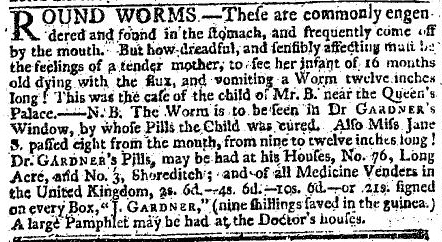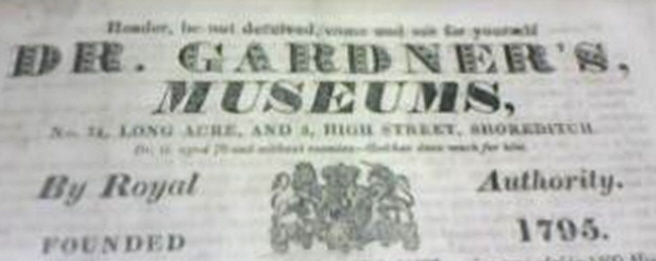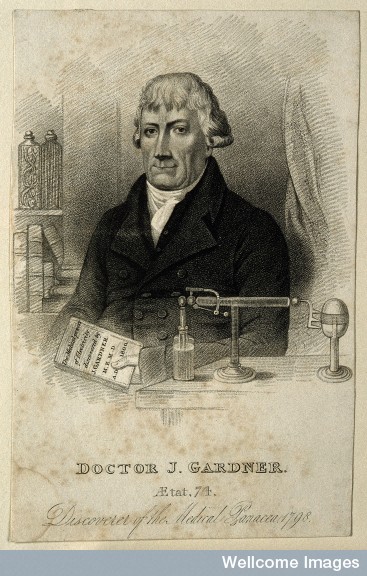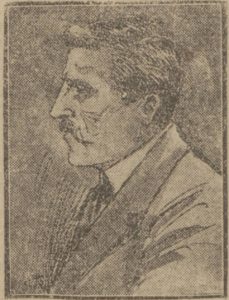
It’s a while since we last heard from our old friend Ascaris lumbricoides, so it’s time he made another appearance on The Quack Doctor together with a few of his helminthic chums.
I’m putting together a talk about the career of John Gardner, a former soldier and picture-framer who became a medicine vendor and Methodist preacher in the 1780s. Gardner’s best-known nostrum was a vermifuge, relieving his patients of some spectacular parasites that he collected and preserved in his museums at Long-Acre and Shoreditch.
Last week I went to the Wellcome Library to have a look at a broadside (c. 1822) advertising Gardner’s collections, and its cheerfully disgusting exuberance was a joy to read. These specimens had the job of persuading new patients that their symptoms resulted from something equally revolting, and judging by the advertising, this would have worked a treat.

Early 19th-century anti-quackery publications portrayed Gardner as a hypocrite whose conspicuously pious attitude was just a front for charlatanry. The specimens, they claimed, had not passed through any human sphincters but were made by Gardner himself out of everyday substances. His tapeworms were chicken guts and his roundworms vermicelli, while ordinary insects and lizards played the part of the other strange beasts.
Gardner’s shop displayed the sign ‘The Universal Remedy Under God,’ but a critic in the 1820s accused him of holding ‘a poisonous nostrum in one hand, and the Holy Bible in the other,’ and his Methodism perhaps provided him with a get-out clause for patients who weren’t cured. A correspondent to the Medical Adviser in March 1824 described a butcher going to complain that the worm remedy had made him worse. It transpired that the butcher worked on Sundays and didn’t go to church, so Gardner allegedly told him:
God help you, it is an affliction of the Lord for your wickedness. I can do nothing for you, it would be impious to attempt relieving you; good day, I am sorry for you, young man.
(The butcher replied ‘So am I: good day, doctor.’)

There is another side to Gardner’s religion, however – he was the founder of the Stranger’s Friend Society for the relief of the poor in 1785. By his own account in The Grain of Mustard Seed (1829), he got the idea while visiting a destitute fistula patient in a garret. Gardner began to put by a penny a week to help those less fortunate, and encouraged his neighbours to do the same. The society grew, inspiring similar organisations across the country.
Back to the worms, however. The following is a small selection of the exhibits detailed in Gardner’s broadside. A. lumbricoides is here referred to as Teres – Gardner tended to use the term ‘ascarids’ for threadworms instead.
Worms, from 1 inch to 130 in length, some with 150 suckers; others in the form of caterpillars; another species like woodlice, 12 feet to each; a wolf of the stomach, expelled from a lady at Hoxton, who had nearly fallen victim to its ravages!!
One animal, with ears like a mouse, from a gentleman. Another with 4 horns, 6 legs, and 12 feet, which lived 9 days, from a child of 9 years; a Tape Worm, its edges like the teeth of a saw; a Stomach Worm by a lady’s mouth, 7 inches long, in the act of emitting its young; male and female Teres, one emitting her young, were preying in the vitals of a gentleman five years, who could find no relief in Paris, nor Edinburgh!!!
A round Worm, 10 inches long, from the mouth of a child, aged 20 months, at the Palace; a Worm, resembling a small snake from the bowels of a man; 44 round Worms, 9 inches each, from a child; a narrow Tape Worm from a young woman’s mouth, 18 feet—she also voided 40 feet downwards, had been afflicted 16 years.
An insect from a young woman’s stomach, of a caterpillar form: it lived 7 weeks in a bottle, and gnawed through two corks!!
Two hundred worms resembling wood-lice, expelled from Mr. A— Hollywell Mount, which had tormented him for many months; a Bamboo Worm, with 4 horns and 12 legs, expelled from a man, whom it had nearly destroyed. Worms from the mouth, nose and ears of Mrs. T.——, and in the milk of the breast of Mrs. P.——, Bishopsgate Road.



One thought on “The Worm-Doctor of Shoreditch”
Comments are closed.